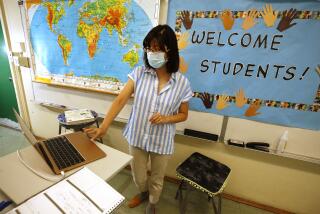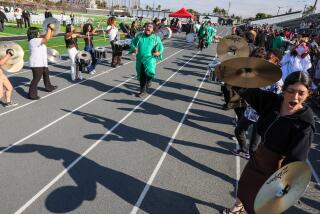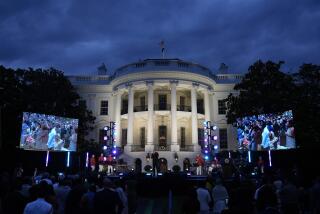Look in the Mirror for Racial Attitudes
- Share via
The flap at Inglewood High School over Black History Month and Cinco de Mayo observances once again places history itself at the center of a controversy. More often than not these days, it is the history of race in America and its legacy that drives race talk--from the need to “come to terms” with slavery to the DNA-certified proof that Thomas Jefferson did indeed father one of Sally Hemmings’ children. The Inglewood incident reminds us that history can be a valuable force for social change.
The concept of the racially or ethnically specific public history lesson embodied by Black History Month and Cinco de Mayo is built on the noble idea that the retelling of historical events, both triumphant and tragic, will embolden racial pride and bolster interracial or ethnic tolerance.
I would like to propose, however, adding another category to the list of things that need constant discussion in our schools: the mostly unspoken personal histories of racial interaction, awareness and bias that are part of every one of us.
In writing my memoir about growing up white and poor in a predominantly black and Latino housing project in New York, I confronted long-buried, wrenching memories of my parents’ and my own racism. These remembrances, more effectively than a decade of scholarly research on racism, allowed me to understand the origins of my racial attitudes and to confront them.
For example, my recollection of the night that Martin Luther King was assassinated, when my mother screamed at me that the civil rights leader deserved to die, was painful. But it gave me insight into where my own past ambivalence about African Americans had come from. It is this memory, and the sinister memories like it shared by millions of white people, that is erased from the public telling of both personal and American history.
All too often teachers encourage their students to think in abstract or generalized terms about the sticky and emotionally trying subject of racism. The result of these efforts has been less than stellar: Despite its annual celebrations of Black History Month and Cinco de Mayo, for example, Inglewood High School has reported race-related fights every spring since 1990.
While discussing gruesome and inhuman slave ships or Marian Anderson singing on the steps of the Lincoln Memorial can instill a sense of outrage and/or self-esteem in young people, such events remain comfortably in the past. They do not challenge students to think about the question that may hold the greatest hope for achieving racial understanding: Where do my own racial attitudes come from? Where, how and why have I learned to fear, to distrust, to hate people who are different from me?
President Clinton’s lofty goal of a national conversation on race is failing to have any substantive effect because most Americans are unprepared to think about their own personal prejudices. While I am not optimistic about my own generation’s ability to change, I believe we have a responsibility to try to help our children think and talk differently about race.
Teaching history can be the mechanism through which generations avoid repeating the mistakes of the past. But this goal will not be reached unless we expand our notion of history to include our own relationship--and that of our parents, our relatives, our neighbors, our teachers--to the events, both public and private, that drive us to be hateful to one another.


